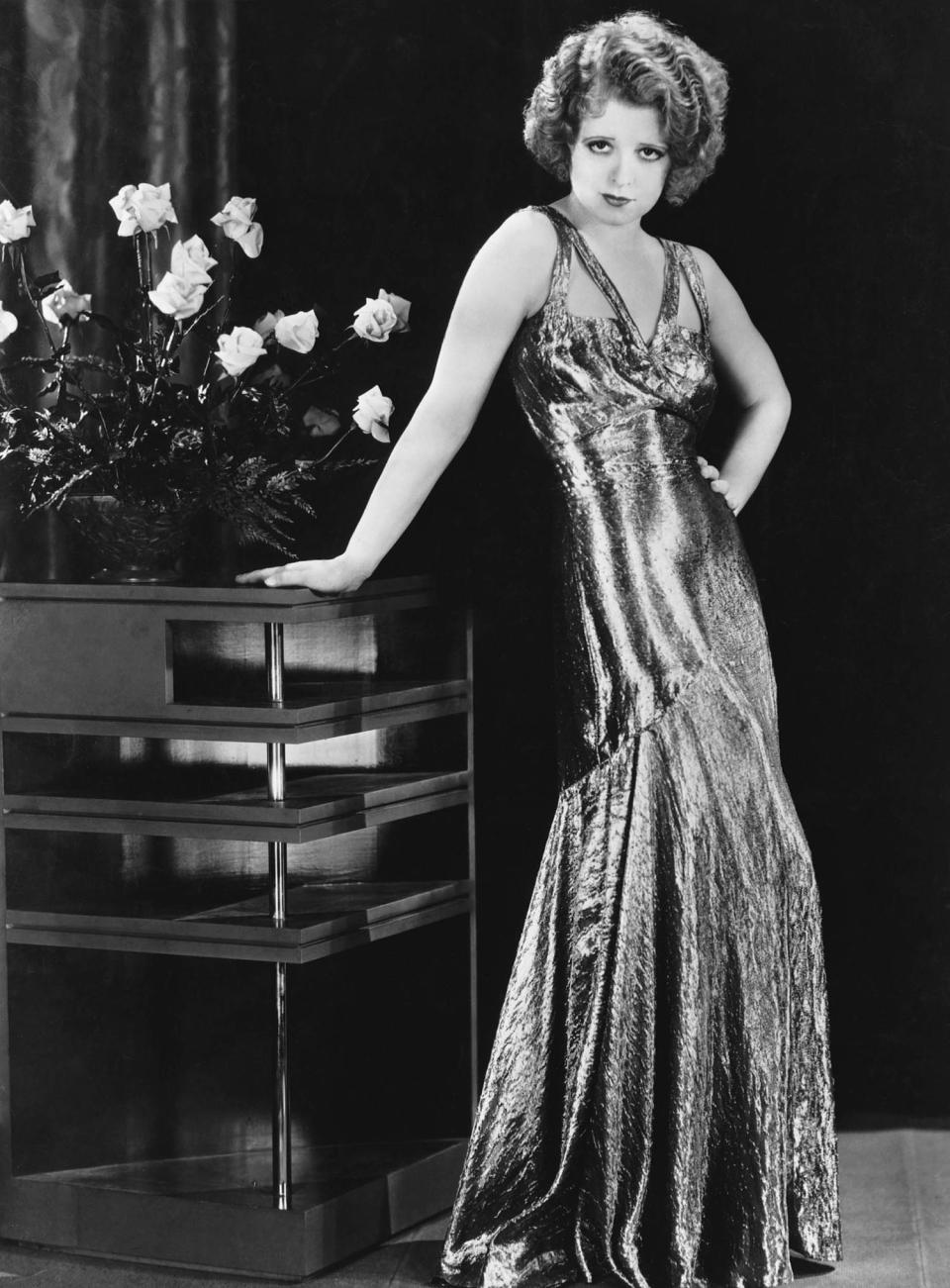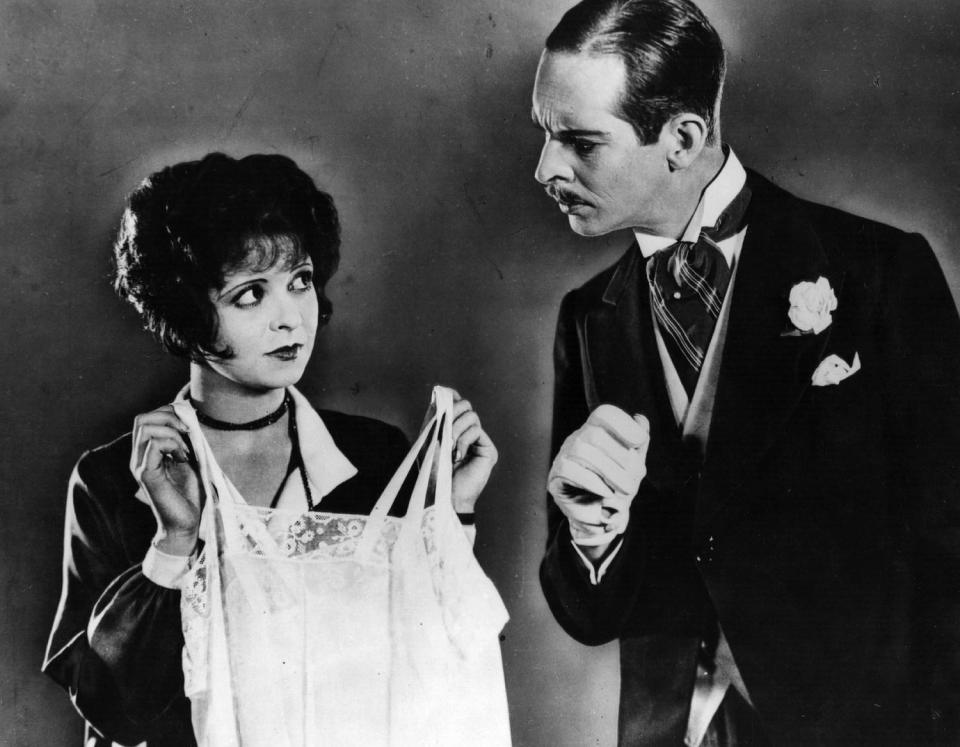Taylor Swift praises ‘hero’ Stevie Nicks in the audience before playing 'Clara Bow' for the first time on tour
For the first time on her “Eras Tour,” Taylor Swift played hit “Clara Bow” with a special inspiration in the audience.
Before playing track No. 16 on her latest “The Tortured Poets Department” album for Dublin, Ireland on June 30, Swift took a moment to recognize her “friend” Stevie Nicks, whose namesake serves as a lyric in the song.
“A friend of mine is here watching the show, who has really been one of the reasons why I, or any female artist, get to do what we get to do,” Swift said, per fan footage shared on social media, of the Fleetwood Mac singer.
Swift then praised Nicks for being a mentor and “guiding hand” to female artists over the years, adding, “I can’t tell you how rare that is.”
“She’s a hero of mine and also someone that I could tell her any secret and she’d never tell anybody. She’s really helped me through so much over the years,” Swift said. “I’m talking about Stevie Nicks.”
After applauding for Nicks herself, along with the massive crowd, Swift strummed “Clara Bow” for the first time live on acoustic guitar.
The song, as she’s said, centers around how the entertainment industry building up and breaking down its “it girls” like Clara Bow, Nicks and, now, Swift.
At one part of the song, Swift seems to quote someone telling her she resembled the iconic Nicks back in the singer’s heyday during the 1970s and ‘80s.
“‘You look like Stevie Nicks/ In ‘75, the hair and lips/ Crowd goes wild at her fingertips/ Half moonshine, a full eclipse,’” Swift sings.
Here's what else to know about Bow and Swift's song.
Who is Clara Bow?
Bow's name might ring a bell, particularly among Swifties’ older relatives. That’s because Bow was not just a real person — a movie actress who lived from 1905-1965 — but she also was the first true “It Girl.”
She was one of the first Hollywood sex symbols and celebrities, and received 35,000 letters per month at her peak, as biographer David Stenn, who wrote “Clara Bow: Runnin’ Wild” told TODAY.

“We could not believe it,” Bow’s great-granddaughters, Nicole Sisneros and Brittany Grace Bells, told People magazine in February, when they learned of the track Swift would be releasing. “We were shocked and then the intrigue set in because no one from our family has been contacted or knew about this prior.”
Clearly, there’s something about Bow that has captured Swift’s imagination. But what?
“If I were to hazard a guess, it’s because Clara Bow was both celebrated and condemned in the media in a way that male stars never were,” Stenn said. “I don’t think that double standard sadly, has left.”
He added: “Clara Bow experienced an unprecedented amount of both and endured and prevailed.”
Sound familiar? Well, let’s draw back our Bow and take aim at these facts about the “It Girl” of the past, who’s all the buzz nearly 120 years after she was born.
Clara Bow’s rough early years
Bow was born Clara Gordon Bow in Brooklyn, New York on July 29, 1905, Stenn told TODAY. She came into the world in the middle of a heat wave, after a risky pregnancy (her two older sisters had died as newborns).
When her mother was 16, she'd suffered a head injury and started having epileptic seizures and psychotic episodes. Bow was left taking care of her, and sometimes fending her off: One night in 1922, Bow awoke to find her mother holding a butcher knife at her throat, according to the National Museum of American History.
“I’m gonna kill ya, Clara,” her mom reportedly said, according to Stenn’s biography. “It’ll be better.”
Bow escaped, and her mother was sent to a public asylum. With her mother away, 16-year-old Bow was raped by her father, according to Stenn's book. Bow's mother died in 1923.
Red-haired and often wearing worn-out clothes, Bow was picked on at school. But she was tough and behaved in what was considered a tomboy fashion of the day. Eventually, she planned on a career teaching athletics, she wrote in a piece that appeared in The Boston Globe in 1924.
Clara Saw the future in films
After winning nationwide acting contest Bow landed a role “Beyond the Rainbow” (1922), but that didn't bring instant fame.
She gave an extensive Photoplay interview (via GoldenGlobes.com) in 1928 and said, "Things weren’t breaking for me at all. Winning the contest hadn’t seemed to mean a thing.
"I wore myself out trying to find work, going from studio to studio, from agency to agency, applying for every possible part. But there was always something. I was too young, or too little, or too fat. Usually, I was too fat. When I told them that I’d won this contest, they only laughed.”
But appearing in the movie “Down to the Sea in Ships” (1922) earned her positive attention, and more roles.
After relocating to Hollywood, Bow signed a contract (which was commonplace for actors at the time) with Preferred Pictures and soon was earning $200 per week, wrote Stenn.
Sometimes she made multiple films at the same time, with 31 movies featuring Bow released in three years. In 1925 she made 15 films — and one of them, “The Plastic Age,” was a hit.
With Preferred going into bankruptcy, she shifted to Paramount Pictures with Preferred's B.P. Schulberg, and began to work in more prominent films like “Dancing Mothers” and “Mantrap” (both 1926).
How she became 'It'

We think of “It Girl” as referring to “oh, she’s got ‘It’” — like an unidentified wow factor.
And while that was true of Bow, the idea of being the “It Girl” came from a movie she starred in from 1927 called “It," which was written with her in mind.
She played a retail worker whose boss fell for her — and Bow’s look (perky personality, bowed lips, doll-like face) became the big trend of the day.
Over the next years, Bow became the face of the Roaring '20s. Ultimately she made 57 movies total, 11 of which were talkies.
She also was one of the few actors to successfully leap from silent films. She was the modern liberated woman, a jazz baby who smoked, drank and spoke her mind.
Her 1927 film, “Wings,” about a love triangle between Bow and two pilots, won the first Academy Award for best picture.
As the Golden Globe Awards website notes, author F. Scott Fitzgerald said she was “the real thing, someone to stir every pulse in the nation.”
Bathing suits and many men: Clara’s freedom is her downfall
With every spectacular rise there is often a fall, and Bow’s came quickly.
She had affairs with actors like Gary Cooper (her co-star in 1927’s “Children of Divorce") and directors like Victor Fleming, showed up at a fancy hotel dinner wearing a bathing suit under a fur coat, and gossip magazines started to write about her.
Her hairdresser-turned-personal secretary went on trial for embezzlement, Los Angeles Magazine reported, and B.P. Schulberg — who’d signed her Preferred Pictures contract and brought her to Paramount — started calling her “Crisis-a-Day Clara,” as The Chicago Tribune wrote.
The pressure was too much to deal with. Bow had been dealing with mental challenges throughout her whirlwind career, Stenn notes, potentially caused by her traumatic childhood.
"The history of sex symbols in the movies is the history of sexually abused women," he says.
There were also truly scandalous and vile accounts being written about her and distributed on street corners, he said. One report said she'd slept with her dog, that she slept with women, and that she stole men's husbands.
"Today we'd call it slut-shaming," he says. "This idea of an independent strong woman still poses a threat to many people in our culture, especially when she is gifted and has immense talent."

In 1931, when she was 25, Bow entered Glendale Sanatorium, L.A. Magazine wrote. She married an actor-politician named Rex Bell in 1931, and retired to have two children with him in Nevada and live on The Walking Box Ranch.
But without her work to keep her mental challenges stabilized, she experienced a spiraling.
"She was deeply traumatized before she arrived in Hollywood, but working provided a creative fulfilling outlet," says Stenn. "She was very proud of her career. She called herself a 'working girl' and was a self-made person. She always said a career was more important to me than marriage. You weren't supposed to say that then."
She was diagnosed with schizophrenia, according to the National Museum of American History, and tried to kill herself. In 1949 she underwent shock therapy, and moved back to Hollywood in 1950, estranged from Bell. They never divorced, and he died in 1962.
She remained very private while living in California again, admitting few visitors, says Stenn. "It's a way of controlling her life," he explains. "When she went out she went out in disguise.
About a third of her silent films are lost today, Stenn told The Kansas City Star this year. But she did receive a star on the Hollywood Walk of Fame in 1960, and a caricature by Al Hirschfeld was used on a 1994 postage stamp.
In March, an 11-minute comedy short of Bow’s, “The Pill Pounder” (1923) surfaced, the Star reported.
The Taylor connection
Addressing Bow in a song isn’t the first time Swift has dipped into the rich history of 20th century women. In 2020, her “Folklore” album included a song called “The Last Great American Dynasty,” about the couple who once owned Swift’s Rhode Island mansion, which she bought in 2013.
As Elle magazine explained at the time, that tune told the tale of Rebekah and Bill Harkness. As the song explains, he was the heir to the Standard Oil fortune. When they married, she became one of the wealthiest women in America.
Swift’s attraction to Bow seems clear, though the singer hasn’t spoken about it yet. But there are parallels — a young woman with a unique talent, who captured the zeitgeist and was attacked by the tabloid press.
Citing “Clara Bow,” though, may just be her warning signal that while she’s definitely the “It Girl” of the moment — she’s not going to let this moment slip through her fingers.
This article was originally published on TODAY.com
